
Christian art is sacred art which uses subjects, themes, and imagery from Christianity. Most Christian groups use or have used art to some extent, including early Christian art and architecture and Christian media.
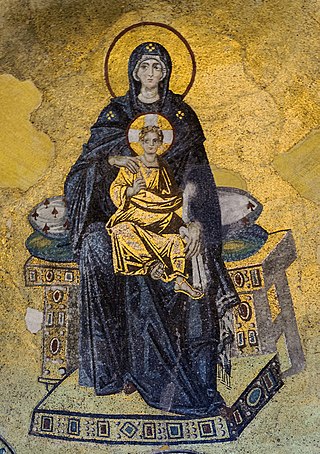
Religious art is a visual representation of religious ideologies and their relationship with humans. Sacred art directly relates to religious art in the sense that its purpose is for worship and religious practices. According to one set of definitions, artworks that are inspired by religion but are not considered traditionally sacred remain under the umbrella term of religious art, but not sacred art.
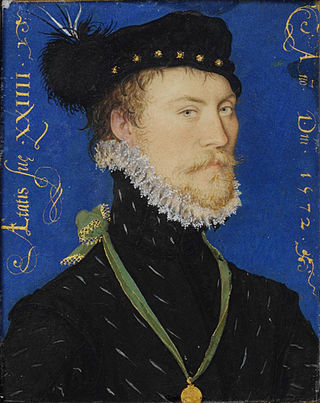
A portrait miniature is a miniature portrait painting, usually executed in gouache, watercolor, or enamel. Portrait miniatures developed out of the techniques of the miniatures in illuminated manuscripts, and were popular among 16th-century elites, mainly in England and France, and spread across the rest of Europe from the middle of the 18th century, remaining highly popular until the development of daguerreotypes and photography in the mid-19th century. They were usually intimate gifts given within the family, or by hopeful males in courtship, but some rulers, such as James I of England, gave large numbers as diplomatic or political gifts. They were especially likely to be painted when a family member was going to be absent for significant periods, whether a husband or son going to war or emigrating, or a daughter getting married.
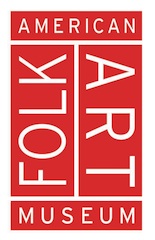
The American Folk Art Museum is an art museum in the Upper West Side of Manhattan in New York City, at 2 Lincoln Square, Columbus Avenue at 66th Street. It is the premier institution devoted to the aesthetic appreciation of folk art and creative expressions of contemporary self-taught artists from the United States and abroad.

Kalighat painting, Kalighat Patachitra, or Kalighat Pat is style of Indian paintings which originated in the 19th century. It was first practiced by a group of specialized scroll painters known as the patuas in the vicinity of the Kalighat Kali Temple in Kolkata, in the present Indian state of West Bengal. Composed of bold outlines, vibrant colour tones, and minimal background details, these paintings and drawings were done on both hand-made and machine manufactured paper. The paintings depicted mythological stories, figures of Hindu gods and goddesses, as well as scenes from everyday life and society, thereby recording a socio-cultural landscape which was undergoing a series of transitions during the 19th and early 20th century, when the Kalighat pat reached its pinnacle.

Portrait painting is a genre in painting, where the intent is to represent a specific human subject. The term 'portrait painting' can also describe the actual painted portrait. Portraitists may create their work by commission, for public and private persons, or they may be inspired by admiration or affection for the subject. Portraits often serve as important state and family records, as well as remembrances.

Qajar art refers to the art, architecture, and art forms of the Qajar dynasty, which lasted from 1781 to 1925 in Iran (Persia).
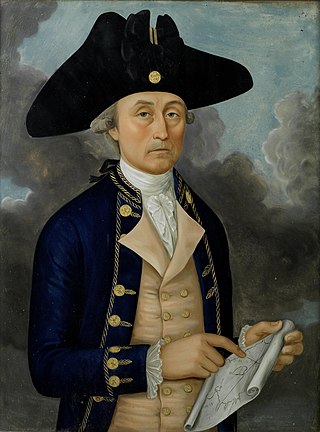
Reverse painting on glass is an art form consisting of applying paint to a piece of glass and then viewing the image by turning the glass over and looking through the glass at the image. Another term used to refer to the art of cold painting and gilding on the back of glass is verre églomisé, named after the French decorator Jean-Baptiste Glomy (1711–86), who framed prints using glass that had been reverse-painted. In German it is known as Hinterglasmalerei.
María Izquierdo was a Mexican painter. She is known for being the first Mexican woman to have her artwork exhibited in the United States. She committed both her life and her career to painting art that displayed her Mexican roots and held her own among famous Mexican male artists: Diego Rivera, José Clemente Orozco, and David Alfaro Siqueiros.
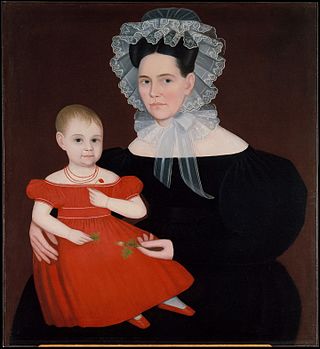
Ammi Phillips was a prolific American itinerant portrait painter active from the mid 1810s to the early 1860s in Connecticut, Massachusetts, and New York. His artwork is identified as folk art, primitive art, provincial art, and itinerant art without consensus among scholars, pointing to the enigmatic nature of his work and life. He is attributed to over eight hundred paintings, although only eleven are signed. While his paintings are formulaic in nature, Phillips paintings were under constant construction, evolving as he added or discarded what he found successful, while taking care to add personal details that spoke to the identity of those who hired him. He is most famous for his portraits of children in red, although children only account for ten percent of his entire body of work. The most well known of this series, Girl in Red Dress with Cat and Dog, would be sold for one million dollars, a first for folk art. His paintings hung mostly unidentified, spare for some recognition in the collections like those of Edward Duff Balken, for decades until his oeuvre was reconstructed by Barbara Holdridge and Larry Holdridge, collectors and students of American folk art, with the support of the art historian Mary Black. Ammi Phillip's body of work was expanded upon their discovery that the mysterious paintings of a "Kent Limner" and "Border Limner" were indeed his.
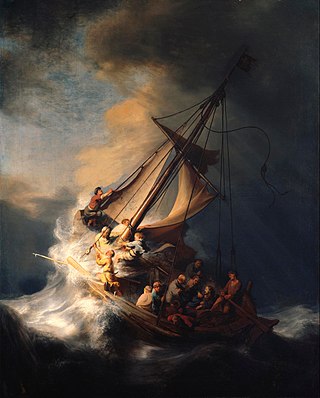
Christ in the Storm on the Sea of Galilee is a 1633 oil-on-canvas painting by the Dutch Golden Age painter Rembrandt van Rijn. It is classified as a historical painting and is among the largest and earliest of Rembrandt's works. It was purchased by Bernard Berenson for Isabella Stewart Gardner in 1869 and was displayed at the Isabella Stewart Gardner Museum in Boston before its theft in 1990; it remains missing. The painting depicts the biblical event in which Jesus calmed the storm on the Sea of Galilee, as is described in the fourth chapter of the Gospel of Mark. It is Rembrandt's only seascape.

The hand-in-waistcoat is a gesture commonly found in portraiture during the 18th and 19th centuries. The pose appeared by the 1750s to indicate leadership in a calm and firm manner. The pose is most often associated with Napoleon Bonaparte due to its use in several portraits made by his artist, Jacques-Louis David, amongst them the 1812 painting Napoleon in His Study. The pose, thought of as being stately, was copied by other portrait painters across Europe and America. Most paintings and photographs show the right hand inserted into the waistcoat/jacket, but some sitters appear with the left hand inserted. The pose was also often seen in mid-nineteenth century photography.

Painting is a visual art, which is characterized by the practice of applying paint, pigment, color or other medium to a solid surface. The medium is commonly applied to the base with a brush, but other implements, such as knives, sponges, and airbrushes, can be used.

Holbeinesque jewellery includes pendants, brooches and earrings in the neo-Renaissance or Renaissance Revival style, and once again became fashionable in the 1860s. The designs differ from the older stylised and pious neo-Gothic jewellery, in that they are extravagantly opulent – this richness of form and colour which had appealed to the Tudor court was rediscovered by Victorian jewellers and their patrons, reviving a fashion that flourished into the early 1900s.

Huichol art broadly groups the most traditional and most recent innovations in the folk art and handcrafts produced by the Huichol people, who live in the states of Jalisco, Durango, Zacatecas and Nayarit in Mexico. The unifying factor of the work is the colorful decoration using symbols and designs which date back centuries. The most common and commercially successful products are "yarn paintings" and objects decorated with small commercially produced beads. Yarn paintings consist of commercial yarn pressed into boards coated with wax and resin and are derived from a ceremonial tablet called a neirika. The Huichol have a long history of beading, making the beads from clay, shells, corals, seeds and more and using them to make jewelry and to decorate bowls and other items. The "modern" beadwork usually consists of masks and wood sculptures covered in small, brightly colored commercial beads fastened with wax and resin.
The Abby Aldrich Rockefeller Folk Art Museum (AARFAM) is the United States' first and the world's oldest continually operated museum dedicated to the preservation, collection, and exhibition of American folk art. Located just outside the historic boundary of Colonial Williamsburg, Virginia, AARFAM was founded with a collection donated by Abby Aldrich Rockefeller and an endowment from her widower, John D. Rockefeller Jr., heir to the Standard Oil fortune and co-founder of Colonial Williamsburg.
Lila Katzen, born Lila Pell, was an American sculptor of fluid, large-scale metal abstractions.

Indochristian art, is a type of Latin American art that combines European colonial influences with Indigenous artistic styles and traditions.

Self-Portrait as a Female Martyr, is also known as the Self-Portrait as a Martyr Saint. This painting was created by the Italian female artist, Artemisia Gentileschi. This self-portrait was made around 1615 depicting the artist herself as a martyr. It is one of two paintings by Gentileschi painted with oil on a wood panel. This self-portrait is currently in a private collection in the United States.

Guatemalan art refers to all forms of visual art associated with a Guatemalan national identity either because they are created within Guatemala, for Guatemalans, or by Guatemalans. The visual arts in Guatemala consist largely of weaving, muralism, painting, architecture, and the performing arts. Most analysis of Guatemalan and Indigenous artwork focuses on the artform of weaving, but contemporary Guatemalan visual art largely consists of painting, muralism, and more that can convey modern social values as well as ancestral indigenous history. Historically, art in Guatemala has combined the mythological heritage of the Indigenous Maya people with the country's politics. Beyond Guatemala, Guatemalan Indigenous artwork is also sometimes referred to as "art naïf," "primitivism," 'traditional art," "Maya art," and "costumbrismo".






















